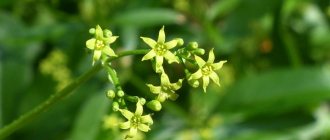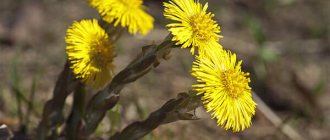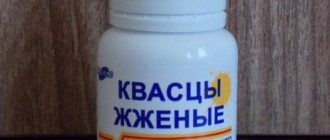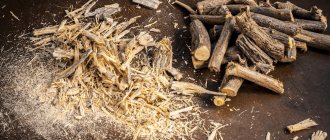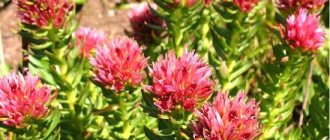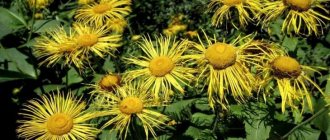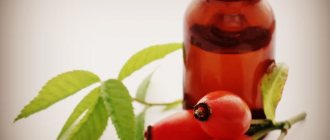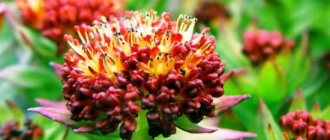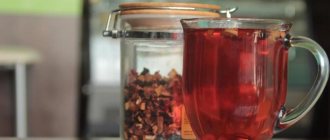Dandelion is a fairly common plant that has a wide growing area. It is unpretentious to climate and humidity, grows in steppes and forest-steppes. This wild plant has found wide application in cosmetology and herbal medicine. The leaves and flowers of the plant contain many vitamins and valuable chemical compounds, but most of the useful substances are accumulated in the root. Do you want to know how to use dandelion root, medicinal properties and contraindications for its use, and basic recipes for preparing herbal remedies? Then read this article.
Chemical composition of dandelion root
The unique chemical composition of dandelion has made it one of the most popular components for many herbal medicines.
The benefits of dandelion root are explained by the content of tri-terpene compounds such as taraxol and taraxerol, sterols, inulin, choline and carotenoids, as well as the bitter substance lactucopicrin. Dandelion root contains B vitamins, vitamins A and C, resins and fatty oils.
The macro- and microelement composition of the root of this plant is impressive. It contains potassium, calcium, zinc, lithium, silver, boron, manganese and others. It also contains wax and rubber; closer to autumn, up to 18% of plant glucose accumulates in the dandelion root.
Collection
Collection is not particularly difficult. The rhizome is dug up after the end of the growing season - from September to October. However, it is permissible to harvest in April, after the leaves appear. If you choose the wrong time, the raw material will be dark, flabby and unsuitable for consumption. Fresh roots are thoroughly cleaned of soil and split lengthwise. You can dry them on a wire or in an oven at a temperature of no more than 40 degrees. Under good conditions, the medicine can be stored without loss of valuable qualities for up to five years.
It is prohibited to collect the plant on lawns, recreational and pet areas, near businesses and along highways. The root has the ability to accumulate harmful substances and absorbs them well from the environment. Collection near fields and pastures is also not recommended, since the land may be fertilized with minerals.
Medicinal properties of dandelion root
Many herbal remedies include dandelion roots; their medicinal properties make herbal raw materials invaluable in the fight against diseases and pathologies. However, like any plant, they also have contraindications. Recipes for medicines made from dandelion root can act as a primary or secondary therapeutic agent. This herbal component has an impressive list of medicinal properties:
- problems of the digestive system - thanks to the bitterness present in the root of the plant, it acts as a mild laxative, activates the digestion and absorption of food, and helps in establishing electrolyte metabolism. Dandelion root is believed to optimize intestinal microflora.
- diseases of the gallbladder and excretory system - dandelion root contains the substance β-sitosterol, which is a plant hepatoprotector. Herbal medicines from dandelion root accelerate the excretion of bile and gallstones, improve liver function and promote rapid regeneration of its tissues. This natural component contains natural antiseptics that kill infections and help treat cystitis.
- protection against cancer and assistance in the treatment of cancerous lesions - dandelion root extract causes massive cell death in melanoma tumors, as well as non-invasive breast cancer. It is also known that dandelion root contains components that stop (in some cases slow down) the appearance and growth of metastases. Dandelion root in oncology is an auxiliary, but very effective therapeutic agent.
- pancreatic diseases (in particular, diabetes mellitus) – dandelion root contains a substance called inulin, which activates the body’s production of insulin (the hormone responsible for regulating blood sugar).
- in case of fluctuations in blood pressure, in particular hypertension, the root of this plant contains potassium, which has a diuretic effect and thereby helps reduce blood pressure. In addition, this phytocomponent contains a lot of fiber, which activates the body’s fight against bad cholesterol (as is known, it is one of the causes of increased blood pressure).
- general strengthening and activation of the body's immune system - dandelion root is rich in phytonutrients, valuable fatty acids and antioxidants, which strengthen the immune system and increase the body's resistance to viruses, bacteria, and free radicals (which are one of the causes of cancer). Antioxidants prevent the destruction of cellular DNA, which results in tissue mutation.
- for diseases of the musculoskeletal system (coxarthrosis, arthritis, arthrosis and others) - dandelion root contains a lot of calcium, which is the main bone material. This phytocomponent also contains the antioxidant luteolin, which is responsible for resistance to age-related changes in bone and cartilage tissue.
- for skin diseases, in particular, lichen, eczema, ulcers and rashes - dandelion root contains bactericidal, fungicidal, and insecticidal substances that effectively eliminate many dermatological problems.
Herbal remedies based on dandelion root are an additional, less often the main medicine, the beneficial properties of which help get rid of various diseases. They act gently and in most cases have no side effects.
The following video talks about the use of dandelion root. Benefits of dandelion roots:
Dietary supplements with T. officinale rhizome
Today, supplements containing Taraxacum officinale root extracts are available on the pharmaceutical market.
The amount of extract in such dietary supplements is 500-1500 mg. The manufacturer's recommended daily dosage is 1000-2000 mg.
It will not be possible to make a tonic drink from such additives. But they contain much more healing inulin than tea. Since during the production of dietary supplements, only water is removed from the roots. All medicinal compounds remain intact. And when we brew “coffee,” we strain it and deprive ourselves of the bulk of plant fiber.
Supplements with dandelion rhizomes are considered general strengthening agents. And they do not have clear indications for use.
An alcohol tincture can be made from phyto-raw materials.
However, experts in the field of traditional medicine do not recommend using the product in this way, since alcohol reduces the biological activity of medicinal plants.
Indications for use of dandelion root
Dried dandelion roots can easily replace coffee and even chicory. At the same time, a drink made from them will be many times healthier than coffee or chicory infusion.
Speaking about what dandelion root treats, we can list many diseases
. This natural substance has a rich mineral and microelement composition, which allows it to be used for various pathological conditions:
- eczema, psoriasis, ulcers , some types of dermatitis (including allergic) - lotions and rubs from an aqueous decoction of dandelion root;
- tuberculosis , as well as diseases of the upper respiratory tract - internal administration of a decoction of the root (possibly with the addition of other herbs);
- hemorrhoids - compresses from infusion or decoction of dandelion root (possibly with the addition of a string);
- constipation - internal use of infusion or decoction of the root;
- gastritis with low acidity - systematically taking a water infusion of dandelion root (or a weak decoction);
- inflammation of the bladder - drinking dandelion root tea;
- to get rid of gallstones and remove bile - internally take a decoction of dandelion root (as a rule, this phytocomponent is part of mixed preparations);
- diabetes mellitus - constant intake of dandelion root decoction (salads made from the leaves and flowers of the plant are also useful);
- to increase appetite - internal use of alcohol or water infusion of dandelion root;
- to increase lactation in women - tea with the addition of root;
- anemia - drinking juice from fresh dandelion roots;
- rheumatism - internal use of root juice and water infusion from this phytocomponent;
- liver diseases (including cirrhosis) - internal use of dandelion root decoction;
- for epilepsy - alcohol tincture of dandelion roots;
- to remove warts and calluses - compresses made from an alcoholic infusion of dandelion roots;
- to get rid of toxins - internal intake of powder from dried dandelion roots, diluted with water;
- arthritis, arthrosis, rheumatism – ointment based on roots;
- polyarthritis - systematic internal intake of dandelion root infusion;
- for Giardia - use an aqueous infusion of crushed roots.
For treatment, dandelion root is usually dried and crushed.
To treat all these diseases, there are recipes for preparing herbal remedies based on dandelion root. It is worth reading reviews about dandelion root and familiarizing yourself with the methods of its use before starting natural treatment. The same can be said about existing contraindications.
Can the decoction be used to treat skin diseases?
In folk medicine, a decoction of the roots (tea, “coffee”) is used to treat acne, eczema, psoriasis, boils, treating the affected areas of the skin with it.
Although the decoction has anti-inflammatory properties that may be useful in treating dermatological diseases, experts do not recommend using it in this way.
Since with prolonged contact with the skin, the decoction can cause contact dermatitis and this review will only worsen the condition.
Contraindications for use
Despite its usefulness and good tolerability, dandelion root medicines have their own contraindications.
These include blockage of the bile ducts, exacerbation of gastritis and an open form of gastric ulcer. If you take dandelion medicine in one of the above conditions, severe vomiting and diarrhea may begin, and your overall health will worsen. Medicines made from dandelion (including roots) are contraindicated for people with high acidity of gastric juice.
People suffering from intestinal microflora dysbiosis should take decoctions, infusions or tinctures based on the root of this plant with great caution, as they have a laxative effect. With diarrhea, such a substance can cause pain and cramps.
Those who are prone to allergies need to carefully begin treatment with herbal preparations. A negative reaction is often caused by flower pollen rather than dandelion root, but you still need to first take a small portion of the product, and in the absence of any symptoms, begin full-fledged therapy.
We also recommend that you read the article: Dandelion: medicinal properties and contraindications. Dandelion is a plant well known even to those who are far from natural treatment or healthy eating.
How to dry in the oven
If you don’t want to cut the dandelion roots into small pieces, you can place them entirely on a baking sheet lined with parchment paper and place them in the oven, preheated to 150 degrees.
During the drying process, raw materials cannot be left unattended for a long time - they will burn. The roots are ready the moment they begin to break easily in your hands. Up to this point, they had bent, not broken.
After the roots have dried, they will still have to be chopped before brewing. Therefore, they are usually cut in advance. As a rule, in circles. And also place them in the oven at 150 degrees and make sure they don’t overcook.
Most popular recipes
There are many recipes for herbal remedies made from dandelion root. The main ones include water and alcohol infusion, decoction and oil. But there is also a very simple recipe for a healthy drink.
Dandelion coffee
From the dried, powdered root, you can brew a drink similar to coffee. It’s called dandelion coffee. It is very healthy and rich in vitamins; it is an excellent alternative for those who for some reason cannot drink traditional coffee. To prepare it, you need to lightly fry or dry the dandelion roots in the oven or at room temperature. Next, grind the root into powder using a coffee grinder or meat grinder and brew it like regular coffee. Strain and enjoy the divine drink.
The video shows how to collect and prepare raw materials and how to make coffee from dandelion.
Dandelion root infusion
An aqueous infusion of dandelion roots is taken for general strengthening of the body and as a tonic. It is prepared from 1 teaspoon of crushed (dry or fresh) roots, poured with 200 grams of boiling water. All you need to do is leave for 20 minutes, then strain and take 50 grams 4 times a day, before meals.
Alternatively, you can prepare an infusion as follows: 2 teaspoons of crushed dandelion roots are poured with 200 grams of cold water and infused for 8 hours. Then the liquid is filtered and taken in the same way as the infusion made according to the first recipe.
Decoction
The decoction is good for jaundice and other liver diseases, as well as cholelithiasis.
It is prepared like this: 1 tablespoon of dry, crushed herbal raw materials is poured with 1 glass of boiling water and kept on low heat for 15 minutes, then you need to remove the container with the product from the heat and let it brew for another 45 minutes. The liquid is filtered and taken 70 grams 2 times a day, on an empty stomach.
Alternatively, you can pour 1 tablespoon of crushed dandelion roots into 1 cup of boiling water, boil for 1 minute and leave for 1 hour. Then the liquid must be strained and drunk in the same way as for taking the decoction prepared in the first way.
Alcohol tincture based on dandelion root
For this herbal remedy, it is best to use 70% medical alcohol, but in its absence, high-quality vodka will do.
To prepare you will need: 2/3 cups of dry, crushed roots, pour 1 cup of vodka and leave for 2 weeks in a dark place, shaking occasionally. After this, the liquid is filtered and used internally (for epilepsy) 1 tablespoon three times a day or externally (to remove warts and dry wet skin ulcers).
Dandelion root oil
The oil is prepared only from the dried roots and upper part of the plant. You need to pour 5 tablespoons of roots into half a liter of vegetable oil, close tightly and leave in a warm place for 2 weeks, stirring occasionally. After this, the oil is filtered and poured into a clean, dry storage container.
You can make the oil “hot” using a water bath. Technically it is more complicated, but it will require much less time to prepare. The components, taken in proportions as for the classic method of preparing oil, must be kept in a water bath for 1 hour, then cooled and strained.
To keep the product longer, you can add 2 ampoules of tocopherol to it. As a rule, the oil retains its usefulness for 1 year.
The oil is usually used as an external remedy. Its healing and regenerative properties are used to treat burns and other skin damage. The oil is also used as a pain reliever for pain in the joints and spine, and gout. If you apply oil during a massage, it will help speed up the relaxation of your body.
Drying in a pan
The roots, cut into circles or very small pieces, are fried in a frying pan.
Pour the herbal raw materials into a dry frying pan with a thick bottom and put on fire. Fry, stirring constantly. You should not ensure that the roots are fried. They should simply lose excess moisture.
This method is suitable for those whose oven quickly heats up to high temperatures without holding 150 degrees.
The dried roots are poured into glass jars or paper bags and stored in a dry, dark place.
Expert opinion
Many doctors and herbal experts speak of dandelion as a true “storehouse of vitamins.” This is understandable, because its chemical composition is unusually rich, and many compounds are in the most acceptable form for the human body.
Experts in the field of dietetics and proper nutrition recommend dandelion remedies for those who have a decreased appetite. They are useful for anorexia. Herbalist and biologist M.V. Gordeev notes that all parts of the dandelion are useful, but most of the valuable micro- and macroelements are concentrated in its root. He advises taking medicines from this root as an adjunct to patients with hepatitis and those who have an enlarged liver or problems with the gallbladder.
Diuretic effect of the medicinal plant
The diuretic properties of dandelion are among the best known of all its medicinal properties. It is not for nothing that in France this plant is called pisenlit, which translates as “to wet the bed.”
Some modern studies confirm the presence of diuretic activity in the medicinal plant. Therefore, it is useful in the treatment of hypertension, kidney disease, and weight loss.
But not all researchers agree with these conclusions. Since the biological mechanism responsible for the diuretic effect of dandelion roots has not been identified, it is hypothesized that they do not increase fluid excretion from the body, but simply irritate the bladder, increasing the number of urinations, but not their volume.
Reviews
Reviews of treatment with herbal remedies based on dandelion root are mostly positive. But it is worth noting that their inherent bitterness is not well tolerated by everyone. Honey and lemon can be added to infusions and decoctions to make their consumption more pleasant. Many of those who have been treated with natural remedies from the root of this plant note its mild, gradual effect, which intensifies as the use of the natural medicine continues.
Anyuta: My mother-in-law uses a decoction of dandelion root to treat cystitis. The disease is chronic and many different medications have been tried over the years. Some helped, some didn't. One day in Health magazine she found a recipe based on dandelion roots. And for many years now, decoction has been the main treatment for exacerbation of the disease.
Svetlana: I prepare an infusion from dandelion roots to lower blood sugar levels. Once I learned about this property of the plant, I decided to try it for treatment and did not regret it. In winter I buy the root at the pharmacy, in summer I collect it at the dacha when I weed the beds. I make 400 ml of infusion per day. To do this, pour boiling water over 2 tbsp. root After the product has been infused for about 2 hours, it can be consumed. I drink it 3 times a day before meals. The main disadvantage that I noticed is that if used for too long, the therapeutic effect begins to decrease, so I have to take a break for several months.
Is it true or false that dandelion rhizome cures diabetes?
In folk medicine, the roots of T. officinale are widely used as a treatment for type 2 diabetes.
Indeed, herbal raw materials contain bioactive compounds that have antidiabetic properties. These are sesquiterpene lactones, taraxasterol, taraxerol, chlorogenic acid.
But antidiabetic activity has now been confirmed mainly in test tube experiments, where dandelion extracts block the enzyme alpha-glucosidase, as antidiabetic drugs do.
No clinical trials have been conducted to confirm the presence of such medicinal properties in T.officinale.
